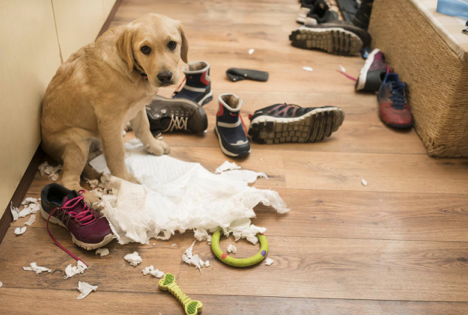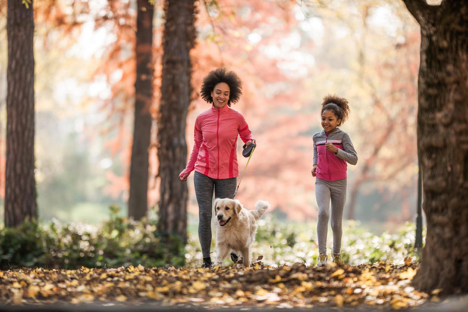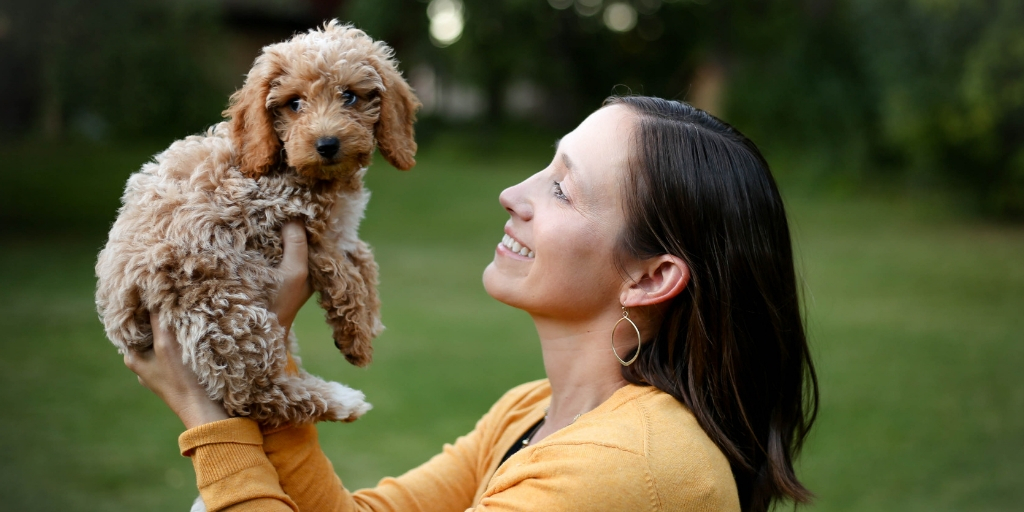Dogs are incredible creatures. They’re both beautiful and bright. Some even say dogs are so smart that they have learned to train humans. If you think about it, it really is them that is training us on when we need to take them out, feed them, and give them belly rubs. A dog’s mind is not too different than our own. They recognize certain body movements and even read facial expressions. Dogs can also understand our emotions and feel many of the emotions we feel. Unfortunately, anxiety is one of those emotions. Fear-based and separation anxiety are the most common sources of stress in your friend Fido.

Fear-Based Anxiety
Like humans, dogs can develop fears. From puppyhood until about three years of age there is a critical socialization period. Exposure to social and environmental experiences during this stage will determine how they respond and interact with various stimuli in adulthood.
Fear-based anxiety in dogs can usually be traced to loud noises like thunderstorms, fireworks, and vacuums. Negative experiences can also leave a lasting impact on their response to certain stimuli.
Separation Anxiety
Separation anxiety is sparked when a dog is separated between their most trusted guardian. Dogs suffering from separation anxiety can experience the most destructive behavior.
However,some breeds are more prone to separation anxiety than others. Intense working dog breeds, like shepherds, tend to be more prone when left inactive. Other breeds, include toy and mini breeds, like that of the toy poodle. Bred as a companion dog, they do not do well when left alone.

Recognizing Anxiety
Anxiety in dogs can be shown through many different ways. Here are the signs you should keep an eye out for the most.
- Aggression
- Urination
- Drooling
- Panting and Shaking
- Destructive Behavior
- Depression
- Excessive Barking or Licking
- Pacing
- Restlessness
- Hiding or solitude
Improving Your Dog’s Happiness
Improving your dog’s happiness can be done in just four easy steps. If each of these is given consideration, your pup (and your surrounding friends and family) will surely thank you.
1. Exercise
As mentioned earlier, certain breeds are more susceptible to separation anxiety. Without regular activity, these larger breeds, like shepherds and pointers, can become bored. Boredom can nurture a destructive dog, especially when you’re away at work all day.
The saying a tired dog is a happy dog holds true. Adding thirty minutes of physical activity will improve both the physical and mental well being of your furry friend. Ultimately, keeping your dog happy and your home free of destruction.

2. Consult a Veterinarian
If you feel as if your dog is showing extreme signs from the above list you should consult your veterinarian. They will be able to identify the cause of your dog’s anxiety as well as rule out the possibility of a medical condition.
After pinpointing the cause of your dog’s anxiety, your vet will be able to prescribe the necessary action to improve behavior and attitude. Training and counterconditioning are a couple of methods used to correct anxiety responsible responses.
3. Training & Counter Conditioning
Training and counterconditioning are techniques used to correct your dog’s attitude and response toward certain stressful stimuli. While cautiously exposing them in small quantities, these approaches will allow you to actively desensitize your dog’s attitude towards a specific stressor. Training and counterconditioning will not fix the problem overnight, but with enough patience and diligence, you’ll start to see significant improvements in your dog’s happiness.
Keep in mind that scolding and showing frustration can worsen your already anxious dog. Remember to always show praise and reward with treats for improvements. After all, they are a good boy.

4. Pet-Owner Bonding
Fido is more than just our best friend, he’s family. Many of us work throughout the day, leaving our dogs home alone for hours. We owe it to our family to make sure they feel part of it. When Fido’s happy, everyone is happy.
Dog’s are creatures of habit. Routine will give them something to look forward to each and every day. Whether it’s inviting them to bed for a snuggle , a walk during your lunch break, or even a game of fetch in the back yard, your time with your furry friend will leave a positive impact on their lives and happiness.







